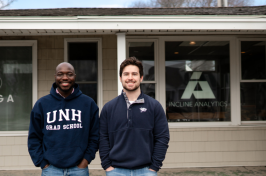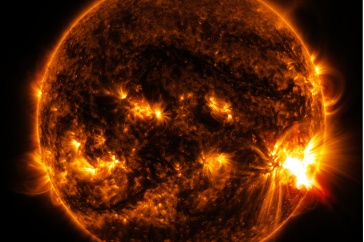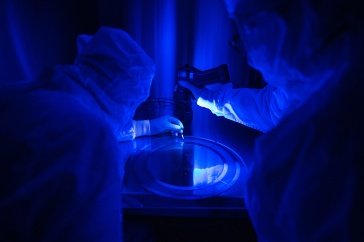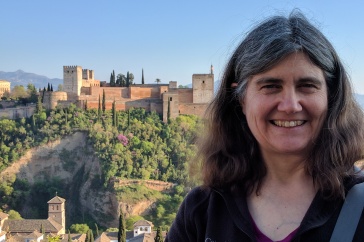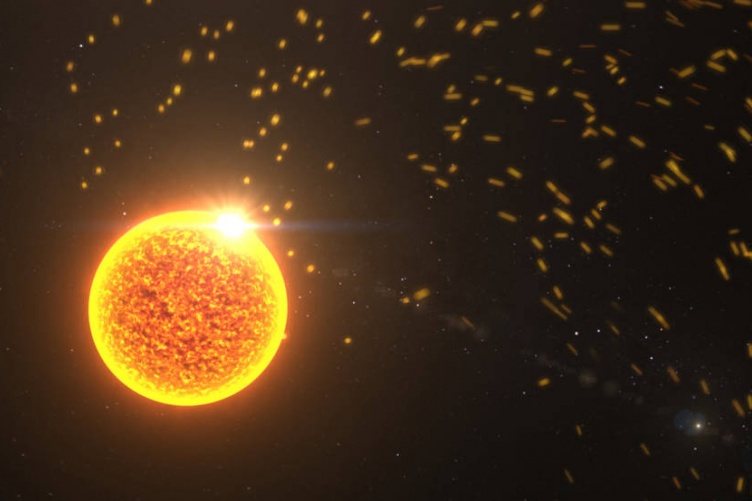
Image by NASA
The UNH Space Science Center (SSC) played an outsized role in NASA’s recent Heliophysics Medium-Class Explorer (MIDEX) selection announcement — two of the five teams selected for new mission concept studies prominently feature numerous researchers and technical staff from the SSC, a nod to the depth and breadth of their combined heliophysics knowledge and space mission successes over the years.
Each team will be awarded $1.25 million over a nine-month period starting in mid-October to develop their concepts, from which NASA will select up to two that will be developed for launch. Heliophysics missions for that final phase of the competition are each cost-capped at $250 million. The information gleaned from these heliophysics MIDEX missions will ultimately help improve scientists’ understanding of how the sun impacts the space environment surrounding the Earth and how we can better protect astronauts in space and satellite-based technologies.
"This mission will build upon UNH's strengths and we look forward to continuing to lead on efforts to help the world understand how the sun impacts our lives and the universe."
The HelioSwarm team, led by Harlan Spence, the director for the UNH Institute for the Study of Earth, Oceans, and Space, proposes the development of a suite of nine spacecraft to observe turbulent variations in the solar wind and interplanetary magnetic field across a variety of scales. One large spacecraft (the “hub”) and eight smaller spacecraft (the “nodes”) co-orbit to produce ever changing groupings needed to reveal for the first time how these variations look in three dimensions and how they evolve in time. HelioSwarm’s novel implementation will unlock the mystery of how turbulence heats space plasmas.
In addition to Spence, the HelioSwarm mission concept team includes many other expert and experienced SSC faculty and staff members. UNH will serve as the overall principal investigator institution, develop and lead the mission Science Operations Center, develop and deliver the central computer processors for each of the nine spacecraft, and will manage the entire science payload comprising a total of 28 individual instruments developed at partner institutions.
“I am utterly delighted with NASA’s selection of HelioSwarm and feel so privileged to lead such an incredible team of scientists, engineers and managers,” says Spence. “The HelioSwarm mission concept will explore the mystery of plasma turbulence, one of the fundamental, yet poorly understood, building blocks of how our sun affects the solar system, and, by extension, how stars influence their environments. This mission will build upon UNH’s strengths and we look forward to continuing to lead on efforts to help the world understand how the sun impacts our lives and the universe.”
The Auroral Reconstruction Swarm (ARCS) team, led by Dartmouth College professor Kristina Lynch, also draws upon considerable UNH expertise — Lynn Kistler, professor of physics and director for the UNH Space Science Center, Roy Torbert, professor of physics, and Chris Mouikis, research scientist, are the UNH co-investigators of the ARCS project; a number of technical staff from the SSC are also involved.
“We are excited to be part of ARCS, which will investigate a long-standing mystery of aurora, the dynamics of electrical currents into and within the ionosphere and how they affect the aurora,” Torbert says.
The ARCS team proposes to use a network of ground-based cameras and an array of 32 very small satellites that will fly over the visible northern lights. UNH is the lead for one of the instruments on board, called the sweeping thermal analyzer, that will measure the flow velocities, Kistler explains. UNH will also lead the systems engineering and will serve as the Science Operations Center in close collaboration with SwRI-EOS.
The Institute for the Study of Earth, Oceans, and Space (EOS) is UNH’s largest research enterprise, comprising six centers with a focus on interdisciplinary, high-impact research on Earth and climate systems, space science, the marine environment, seafloor mapping, and environmental acoustics. With more than $58 million in external funding secured annually, EOS fosters an intellectual and scientific environment that advances visionary scholarship and leadership in world-class research and graduate education.
-
Written By:
Rebecca Irelan | Institute for the Study of Earth, Oceans, and Space | rebecca.irelan@unh.edu | 603-862-0990







